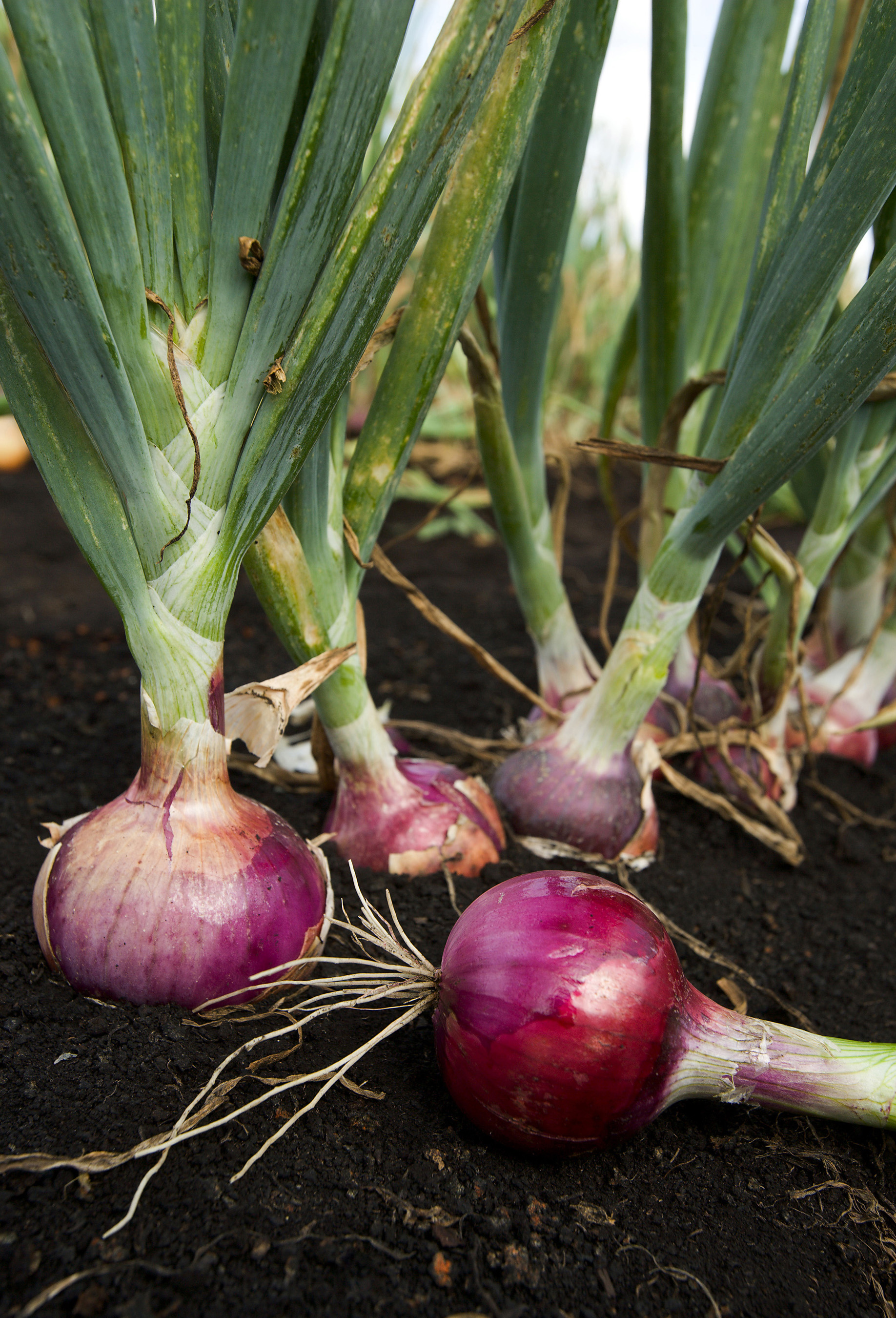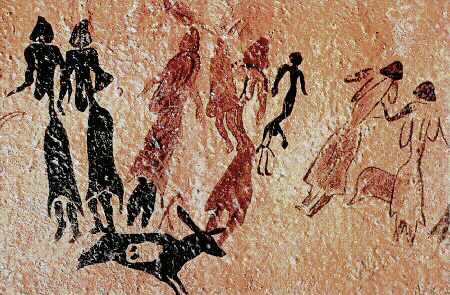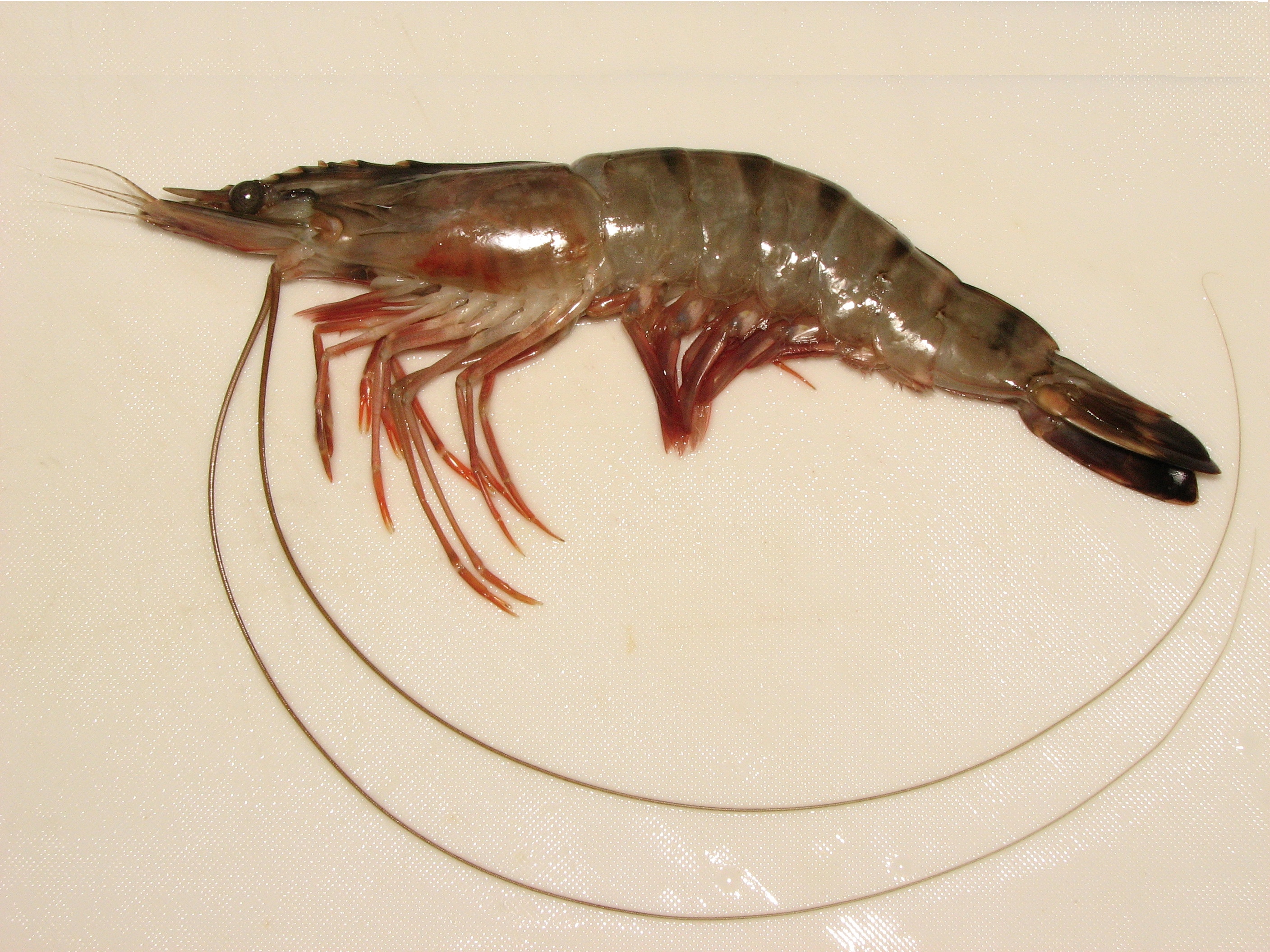|
Figueres Onion
The Figueres onion is an onion cultivar that is a non- hybridized bulb. It is somewhat flattened in shape with an outer purple skin and an interior of a paler color. It is highly appreciated for its smooth, sweet, soft texture, and around 200 grams in individual weight. As its name implies, it is typical of the Figueres and Empordà region of Catalonia. Of the 32,000 tonnes of onion produced in Catalonia each year, 60% consists of this native Figueres variety. fruittoday.com Nutritional properties It can help to expunge excess fluid in the body as it has very little sodium and potassium. It is a good source of |
Allium Cepa
An onion (''Allium cepa'' L., from Latin ''cepa'' meaning "onion"), also known as the bulb onion or common onion, is a vegetable that is the most widely cultivated species of the genus ''Allium''. The shallot is a botanical variety of the onion which was classified as a separate species until 2010. Its close relatives include garlic, scallion, leek, and chive. This genus also contains several other species variously referred to as onions and cultivated for food, such as the Japanese bunching onion (''Allium fistulosum''), the tree onion (''A.'' × ''proliferum''), and the Canada onion (''Allium canadense''). The name '' wild onion'' is applied to a number of ''Allium'' species, but ''A. cepa'' is exclusively known from cultivation. Its ancestral wild original form is not known, although escapes from cultivation have become established in some regions. The onion is most frequently a biennial or a perennial plant, but is usually treated as an annual and harvested in its ... [...More Info...] [...Related Items...] OR: [Wikipedia] [Google] [Baidu] |
Onion
An onion (''Allium cepa'' L., from Latin ''cepa'' meaning "onion"), also known as the bulb onion or common onion, is a vegetable that is the most widely cultivated species of the genus ''Allium''. The shallot is a botanical variety of the onion which was classified as a separate species until 2010. Its close relatives include garlic, scallion, leek, and chive. This genus also contains several other species variously referred to as onions and cultivated for food, such as the Japanese bunching onion (''Allium fistulosum''), the tree onion (''A.'' × ''proliferum''), and the Canada onion (''Allium canadense''). The name '' wild onion'' is applied to a number of ''Allium'' species, but ''A. cepa'' is exclusively known from cultivation. Its ancestral wild original form is not known, although escapes from cultivation have become established in some regions. The onion is most frequently a biennial or a perennial plant, but is usually treated as an annual and harvested i ... [...More Info...] [...Related Items...] OR: [Wikipedia] [Google] [Baidu] |
Cultivar
A cultivar is a type of cultivated plant that people have selected for desired traits and when propagated retain those traits. Methods used to propagate cultivars include: division, root and stem cuttings, offsets, grafting, tissue culture, or carefully controlled seed production. Most cultivars arise from purposeful human manipulation, but some originate from wild plants that have distinctive characteristics. Cultivar names are chosen according to rules of the International Code of Nomenclature for Cultivated Plants (ICNCP), and not all cultivated plants qualify as cultivars. Horticulturists generally believe the word ''cultivar''''Cultivar'' () has two meanings, as explained in '' Formal definition'': it is a classification category and a taxonomic unit within the category. When referring to a taxon, the word does not apply to an individual plant but to all plants that share the unique characteristics that define the cultivar. was coined as a term meaning "cultivated vari ... [...More Info...] [...Related Items...] OR: [Wikipedia] [Google] [Baidu] |
Hybrid (biology)
In biology, a hybrid is the offspring resulting from combining the qualities of two organisms of different breeds, varieties, species or genera through sexual reproduction. Hybrids are not always intermediates between their parents (such as in blending inheritance), but can show hybrid vigor, sometimes growing larger or taller than either parent. The concept of a hybrid is interpreted differently in animal and plant breeding, where there is interest in the individual parentage. In genetics, attention is focused on the numbers of chromosomes. In taxonomy, a key question is how closely related the parent species are. Species are reproductively isolated by strong barriers to hybridisation, which include genetic and morphological differences, differing times of fertility, mating behaviors and cues, and physiological rejection of sperm cells or the developing embryo. Some act before fertilization and others after it. Similar barriers exist in plants, with differences in floweri ... [...More Info...] [...Related Items...] OR: [Wikipedia] [Google] [Baidu] |
Figueres
Figueres (, ; , es, Figueras, ) is the capital of the ''comarca'' of Alt Empordà, in the province of Girona, Catalonia, Spain. The town is the birthplace of artist Salvador Dalí, and houses the Teatre-Museu Gala Salvador Dalí, a large museum designed by Dalí himself which attracts many visitors. It is also the birthplace of Narcís Monturiol, inventor of the first successful machine-powered submarine. Also born here was Mónica Naranjo, one of the best selling Spanish singers of the 1990s and 2000s. History The town's name derives from that of ''Ficaris'', of Visigoth origin. In 1267, King James I of Aragon conceded it ''fuero'' rights, but four years later Count Ponç IV of Empúries set the town on fire. In 1794 Figueras was surrendered to France, but it was regained in 1795. During the Peninsular War it was taken by the French in 1808, recaptured by the Spaniards in 1811, and retaken by the French in the same year. During the Spanish Civil War, it remained loyal to ... [...More Info...] [...Related Items...] OR: [Wikipedia] [Google] [Baidu] |
Empordà
Emporda (from the official name in ca, Empordà, , name in es, Ampurdán, ) is a natural and historical region of Catalonia, Spain, divided since 1936 into two '' comarques'', Alt Empordà and Baix Empordà. The city of Figueres, an important urban and economic center of the Empordà, was designated the capital of Alt Empordà, while La Bisbal d'Empordà, following a more geographic and historical criteria, became the capital of Baix Empordà. Empordà has been the cradle for many pictoric schools, with surrealism standing out, including artists such as Salvador Dalí, Angel Planells, Joan Massanet and Evarist Vallès. Etymology The name ''Empordà'' is a derivative of Empúries (''Empòrion'' in Old Greek or ''Emporiae'' in Latin), which means "the markets". The name Empordà comes from a succession of phonetic derivatives of County of Empúries, a county which had its capital first in Sant Martí d'Empúries and then in Castelló d'Empúries the capital of medieval E ... [...More Info...] [...Related Items...] OR: [Wikipedia] [Google] [Baidu] |
Catalonia
Catalonia (; ca, Catalunya ; Aranese Occitan: ''Catalonha'' ; es, Cataluña ) is an autonomous community of Spain, designated as a '' nationality'' by its Statute of Autonomy. Most of the territory (except the Val d'Aran) lies on the northeast of the Iberian Peninsula, to the south of the Pyrenees mountain range. Catalonia is administratively divided into four provinces: Barcelona, Girona, Lleida, and Tarragona. The capital and largest city, Barcelona is the second-most populated municipality in Spain and the fifth-most populous urban area in the European Union. > > > ''Catalonia'' theoretically derived. During the Middle Ages, Byzantine chroniclers claimed that ''Catalania'' derives from the local medley of Goths with Alans, initially constituting a ''Goth-Alania''. Other theories suggest: *''Catalunya'' derives from the term "land of castles", having evolved from the term ''castlà'' or ''castlan'', the medieval term for a castellan (a ruler of a castl ... [...More Info...] [...Related Items...] OR: [Wikipedia] [Google] [Baidu] |
B Vitamins
B vitamins are a class of water-soluble vitamins that play important roles in cell metabolism and synthesis of red blood cells. Though these vitamins share similar names (B1, B2, B3, etc.), they are chemically distinct compounds that often coexist in the same foods. In general, dietary supplements containing all eight are referred to as a vitamin B complex. Individual B vitamin supplements are referred to by the specific number or name of each vitamin, such as B1 for thiamine, B2 for riboflavin, and B3 for niacin. Some are more commonly recognized by name than by number, for example pantothenic acid, biotin, and folate. Each B vitamin is either a cofactor (generally a coenzyme) for key metabolic processes or is a precursor needed to make one and is thus an essential nutrient. List of B vitamins Note: other substances once thought to be vitamins were given numbers in the B-vitamin numbering scheme, but were subsequently discovered to be either not essential for life or manuf ... [...More Info...] [...Related Items...] OR: [Wikipedia] [Google] [Baidu] |
Folic Acid
Folate, also known as vitamin B9 and folacin, is one of the B vitamins. Manufactured folic acid, which is converted into folate by the body, is used as a dietary supplement and in food fortification as it is more stable during processing and storage. Folate is required for the body to make DNA and RNA and metabolise amino acids necessary for cell division. As humans cannot make folate, it is required in the diet, making it an essential nutrient. It occurs naturally in many foods. The recommended adult daily intake of folate in the U.S. is 400 micrograms from foods or dietary supplements. Folate in the form of folic acid is used to treat anemia caused by folate deficiency. Folic acid is also used as a supplement by women during pregnancy to reduce the risk of neural tube defects (NTDs) in the baby. Low levels in early pregnancy are believed to be the cause of more than half of babies born with NTDs. More than 80 countries use either mandatory or voluntary fortification ... [...More Info...] [...Related Items...] OR: [Wikipedia] [Google] [Baidu] |
Tramontane
Tramontane ( ) ; french: tramontane ; el, τραμουντάνα, tramountána, ; it, tramontana ; la, trānsmontānus ; mt, tramuntana ; sl, tramontana ; sh, tramontana ; es, link=no, tramontana . is a classical name for a northern wind. The exact form of the name and precise direction varies from country to country. The word came to English from Italian ''tramontana'', which developed from Latin ''trānsmontānus'' (''trāns-'' + ''montānus''), "beyond/across the mountains", referring to the Alps in the North of Italy. The word has other non-wind-related senses: it can refer to anything that comes from, or anyone who lives on, the other side of mountains, or even more generally, anything seen as foreign, strange, or even barbarous. Traditions in various countries and regions Spain In Spain the wind is called the ''tramuntana'' or in Catalan and ''tramontana'' in Spanish, Galician and Basque. The wind also lends its name to the Serra de Tramuntana in Mallorca. Th ... [...More Info...] [...Related Items...] OR: [Wikipedia] [Google] [Baidu] |
Ceba De Figueres 03
Ceva, the ancient Ceba, is a small Italian town in the province of Cuneo, region of Piedmont, east of Cuneo. It lies on the right bank of the Tanaro on a wedge of land between that river and the Cevetta stream. History In the pre-Roman period the territory around Ceva was inhabited by the branch of the mountain Ligures known as Epanterii. The upper Val Tanaro was Romanized in the second century BC and it is known that the area was organized around a ''municipium''. However, it is not certain that this was Ceba: Mombasiglio is also regarded as a candidate. In the first century AD Columella referred to a particular breed of cattle raised here, and Pliny the Elder praised its sheep's milk cheese in his '' Natural History''. The town is on the site of the old Roman road from Augusta Taurinorum via Pollentia to the coast and it is probable that there was a market here from which the cheese produced in the region was exported with Rome via the Ligurian ports of Vada Sabatia (the mo ... [...More Info...] [...Related Items...] OR: [Wikipedia] [Google] [Baidu] |
Prawns From Palamós
Prawn is a common name for small aquatic crustaceans with an exoskeleton and ten legs (which is a member of the order decapoda), some of which can be eaten. The term "prawn"Mortenson, Philip B (2010''This is not a weasel: a close look at nature's most confusing terms''Pages 106–109, John Wiley & Sons. . is used particularly in the United Kingdom, Ireland, and Commonwealth nations, for large swimming crustaceans or shrimp, especially those with commercial significance in the fishing industry. Shrimp that are present in this category often belong to the suborder Dendrobranchiata. In North America, the term is used less frequently, typically for freshwater shrimp. The terms shrimp and prawn themselves lack scientific standing. Over the years, the way they are used has changed, and in contemporary usage the terms are almost interchangeable. Shrimp'' vs. ''prawn Regional distinctions The terms shrimp and prawn originated in Britain. In the use of common names for species, shrimp ... [...More Info...] [...Related Items...] OR: [Wikipedia] [Google] [Baidu] |


.jpg)




